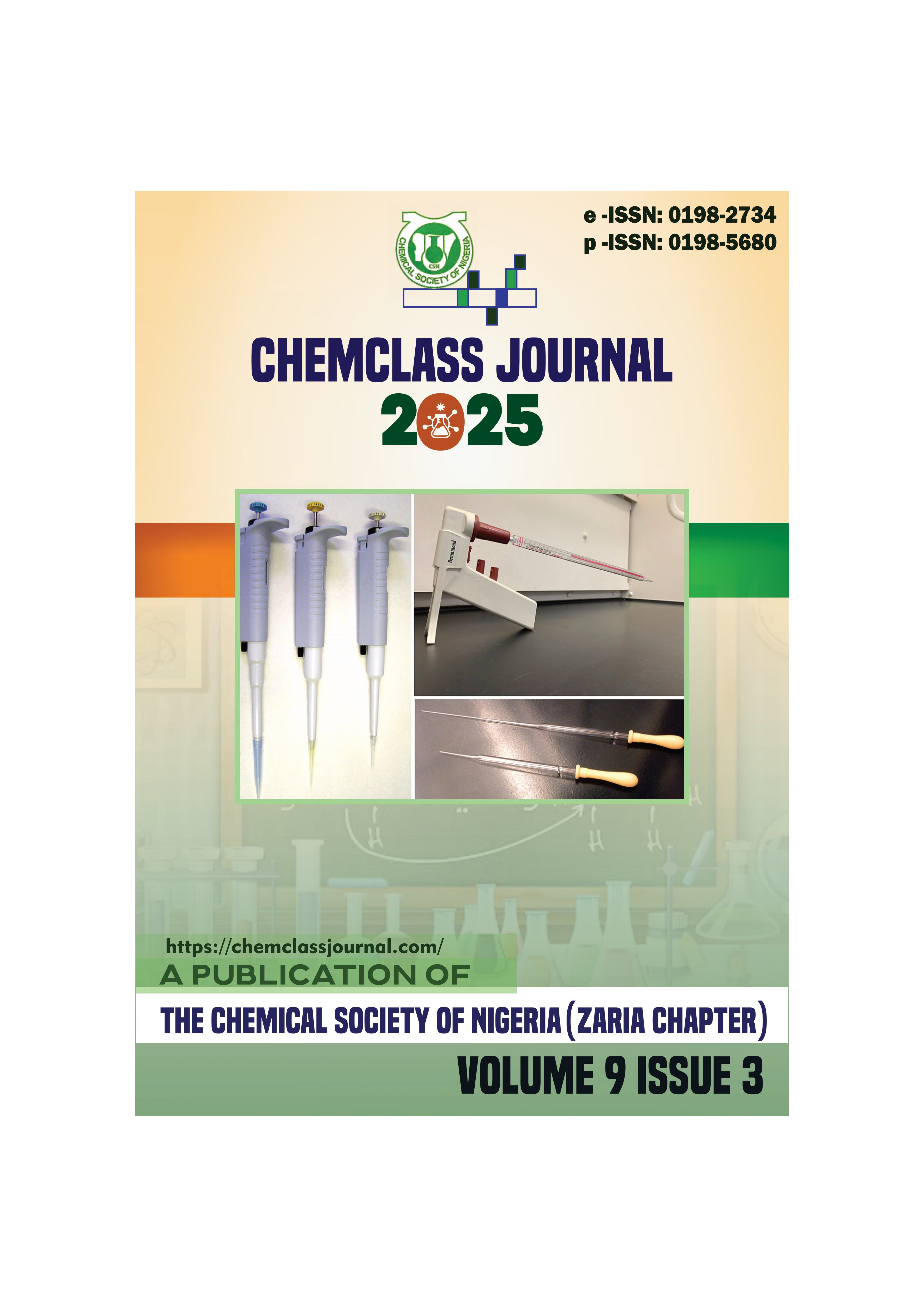Chemical and Functional Group Profiling of Eucalyptus globulus Essential Oil from Zaria, Nigeria
DOI:
https://doi.org/10.33003/chemclass-2025-0903/15Keywords:
GC-MS, Essential Oil, FTIR spectroscopy, Monoterpenes, Eucalyptus globulus, EucalyptolAbstract
The chemical composition and functional group profiling of essential oil of Eucalyptus globulus, which was obtained in Zaria, Kaduna State, Nigeria, were studied by gas chromatography-mass spectrometry (GC-MS) and Fourier transform infrared (FTIR). As far as we are aware, E. globulus oils have been reported in more extensive areas of Nigeria, but this is the first study to report a concerted GC-MS and FTIR dataset of Zaria in particular, thus providing a constituted baseline phytochemical information to the area. The GC-MS analysis with the peak areas normalized to 100% revealed that the domineating constituent was the eucalyptol (1, 8 -cineole) (49.27), followed by 2-terpineol (14.35), 3-terpinene (9.91), endo-borneol (4.96), fenchol (3.84) camphene (2.36), 2 -pinene (2.03), myrcene (1.74), 2 - The existence of oxygenated monoterpenes was supported by FTIR spectroscopy with the characteristic OH, C O and C H absorption bands. The relatively lower composition of 1,8-cineole in comparison to reports in certain foreign countries supports the fact that local edaphic, climatic and agronomic factors may indeed impact essential oil composition. This work, with rigorously normalized quantitative profiling and FTIR functional-group validation, provides validated chemoprofiling data, which can be used to inform chemotaxonomic comparisons and aid initial assessment of Zaria-derived E. globulus oil in pharmaceutical, cosmetic and industrial applications. These background data will inform future studies in the region, sustainable valourization and conservation of the same at the local level





 ChemClass Journal
ChemClass Journal
